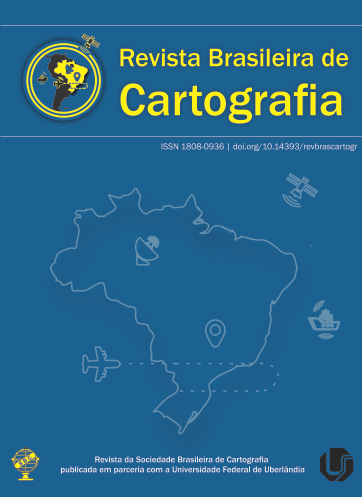Multi-source remote sensing data improves the classification accuracy of natural forests and eucalyptus plantations
Main Article Content
Abstract
It is challenging to map the spatial distribution of natural and planted forests based on satellite images because of the high correlation among them. This investigation aims to increase accuracies in classifications of natural forests and eucalyptus plantations by combining remote sensing data from multiple sources. We defined four vegetation classes: natural forest (NF), planted eucalyptus forest (PF), agriculture (A) and pasture (P), and sampled 410,251 pixels from 100 polygons of each class. Classification experiments were performed by using a random forest algorithm with images from Landsat-8, Sentinel-1, and SRTM. We considered four texture features (energy, contrast, correlation, and entropy) and NDVI. We used F1-score, overall accuracy and total disagreement metrics, to assess the classification performance, and Jeffries–Matusita (JM) distance to measure the spectral separability. Overall accuracy for Landsat-8 bands alone was 88.29%. A combination of Landsat-8 with Sentinel-1 bands resulted in a 3% overall accuracy increase and this band combination also improved the F1-score of NF, PF, P and A in 2.22%, 2.9%, 3.71%, and 8.01%, respectively. The total disagreement decreased from 11.71% to 8.71%. The increase in the statistical separability corroborates such improvement and is mainly observed between NF-PF (11.98%) and A-P (45.12%). We conclude that combining optical and radar remote sensing data increased the classification accuracy of natural and planted forests and may serve as a basis for large-scale semi-automatic mapping of forest resources.
Downloads
Metrics
Article Details
Authors who publish in this journal agree to the following terms:
- Authors retain copyright and grant the journal right of first publication with the work simultaneously licensed under a Creative Commons Attribution License that allows others to share the work with an acknowledgment of the work's authorship and initial publication in this journal.
- Authors can enter into separate, additional contractual arrangements for the non-exclusive distribution of the journal's published version of the work (e.g., post it to an institutional repository or publish it in a book), with an acknowledgment of its initial publication in this journal.
- Authors are permitted and encouraged to post their work online (e.g., in institutional repositories or on their website) before and during the submission process, as it can lead to productive exchanges, as well as earlier and greater citation of published work (see "The Effect of Open Access").





